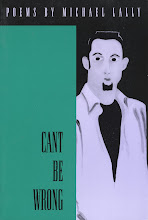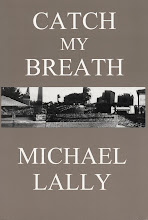Lee Miller is the second of the three women I’ve been identifying with in recent years. I discovered her in the 1960s, when she was mostly known (and still is to some) as Man Ray’s muse and model.
A fashion model for Paris Vogue when she encountered Ray, her image—in one of those helmet-like hats of the flappers—on the cover of American Vogue, made her the face of the Jazz Age for many. But she was a photographer in her own right.
She grew up in Poughkeepsie, New York, where her father, an amateur photographer, used her as a model, often naked, and continued to after she moved to New York and became a successful fashion model, who broke the hearts of Broadway producers and young pilots. One dropped roses on the deck of the liner that took Lee to Europe, only to return to the airport and crash and die! She lost her first boyfriend at fifteen when he drowned, while out on a lake in a rowboat with her.
In Paris, she discovered Ray’s early work and decided to be his muse, replacing Kiki, the famous French model and muse. While printing some of his photographs, Miller accidentally discovered the technique that became associated with Ray, what he and she called “solarization”—for which she never received credit, and didn’t seem to care.
One of the things I love about her most, she never seemed to care what people thought about her, or whether her work got credit or critical acclaim or any kind of worldly “success.” She lived life in the moment, and never seemed to worry about tomorrow.
She was painted by Picasso, among others, and used in avant garde films, like Cocteau’s The Blood of the Poet, and her breasts, made famous by Ray’s photographs, were used as the template for the shape of a new French champagne glass.
She had affairs with many men and women, and seemed to have no regrets, until her affair with the Egyptian ambassador to France. When his wife found out,—one of the five most beautiful women in the world according to a French fashion magazine—she locked herself in a room in a Paris hotel and drank herself to death.
Lee returned to New York and opened one of the first fine art photography galleries. The Egyptian followed her, pressing her to marry him, which she eventually did, ending up in Egypt among its high society for several years, where she threw legendary parties, made sand skiing treks into the dessert with guests from Europe, and had several more affairs.
She ended up in England with one of her lovers after traveling through Europe as the Nazis were taking over, documenting what she saw as the continent changed forever.
All along she took photographs, in France (some early ones misattributed to Man Ray), in New York, in Egypt, and in Europe as it went to war, with very few people even realizing she was a photographer. Until she went to work for English Vogue as a photographer and journalist. On one assigment, she took a photo of Martha Gellhorn with her back to the camera, looking at it through her reflection in the mirror (recently used for the cover of Gellhorn’s SELECTED LETTERS).
A GI photographer, an admirer of the surrealists and Miller’s, made a pilgrimage to visit her, and her lover, the English surrealist, Roland Penrose. The G.I. encouraged her to get British Vogue to send her to photograph the invasion. She had already talked them into letting her do war-related articles, starting with the bombing of Britain and the women who manned some of the anti-aircraft guns. Her photos of bomb damage were collected and published as a book in the U.S. that became a bestseller and helped convince America to enter the war.
She did talk Vogue into letting her join the invasion, to cover nurses in the field hospitals that followed the troops. But after doing that, she made her way to the front lines, where an officer put her under arrest when she was caught taking photos of a battle for a French town the Nazis still controlled.
She sweet talked a pilot into flying her story and photos back to England, where Vogue published them and the positive publicity for the war effort got her credentialed as the first female photographer to cover a war (Gellhorn was the first female war journalist I believe), after which she was present at not only many historic battles but for the capturing of Hitler’s famous Eagle’s Nest mountain hideaway, where another photographer shot a famous photo of her taking a bath in Hitler’s tub.
She was one of the first to document the concentration camps, not only photographing the skeletal victims of Nazi brutality, but also the bodies of German guards beaten to death by the liberated inmates. She always photographed reality as she found it, never making anything more or less pleasant or unpleasant than it was. Even her more surreal photographs, set up to show jarring juxtapositions of seemingly unrelated objects, have the look of news photographs, real and present and uncontrived despite their obvious staging. One of the things I admire most about her work is the way she could make even surreality seem real.
She did the same with her life. She lived it, not making excuses for any of it. She was restless, and often searching for more, but she always seemed able to make the most of whatever circumstances she found herself in. Even as an elderly woman in the English countryside, married to a now knighted Penrose, so she was Lady Penrose, dedicated to gardening and cooking, she won several contests at country fairs with her desserts, among people who had no idea of the adventurous life she had led.
When I was a screenwriter in Hollywood, and even since then, I tried to interest people in making a movie of her life, but couldn’t convince anyone there would be an audience for it. I should have bought the rights to books about Miller when they eventually came out, long after I’d been writing and talking about her, but someone else did (I heard Nicole Kidman, but Sharon Stone seems so much more appropriate to play Miller).
I used to think anything I thought or felt or dug was shared by everyone else, and either they were repressing expressing it, or in denial about it, or unaware, but nonetheless shared what was going on inside me. Now I know better. But still, no audience for the life of Lee Miller? Come on. (A good biography of her by Carolyn Burke came out last year by the way.)
Subscribe to:
Post Comments (Atom)
















1 comment:
WOW! This seems a great story, Sharon Stone would be 100% perfect for this. I would like to see this project in action at hollywood.
Post a Comment